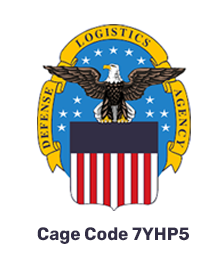January 17, 2024
Mastering the Art of E-commerce Packaging: A Guide to Optimize Your Shipping Strategy

In the fast-paced world of e-commerce, effective packaging plays a crucial role in ensuring customer satisfaction, minimizing costs, and reducing environmental impact.
In this blog, we'll delve into the key strategies for optimizing packaging in e-commerce shipping to enhance efficiency and customer experience.
1. Right-sizing Packages
One of the most effective ways to optimize packaging is to right-size your packages. Avoid using unnecessarily large boxes for small items, as this not only increases shipping costs but also generates more waste. Choose packaging that snugly fits the products while providing adequate protection.
2. Lightweight Materials
Select lightweight packaging materials without compromising on durability. This not only reduces shipping costs but also contributes to sustainability efforts. Consider eco-friendly alternatives like recycled or biodegradable materials to align with environmentally conscious consumers.
3. Protective Packaging
Invest in protective packaging materials to prevent damage during transit. Utilize bubble wrap, air cushions, or eco-friendly options like recycled paper padding to safeguard items without excess bulk. Striking the right balance between protection and minimalism is key.
4. Streamlined Branding
Maintain a professional and cohesive brand image through streamlined packaging design. Simplicity not only communicates professionalism but also reduces printing costs. Opt for minimalist designs that convey your brand identity without unnecessary embellishments.
5. Automation and Technology
Incorporate automation and technology into your packaging process. Implementing automated systems for order fulfillment and packaging can significantly increase efficiency, reduce errors, and enhance overall productivity. Explore technologies like dimensioning systems to precisely measure packages for optimal sizing.
6. Sustainable Packaging Practices
Embrace sustainable packaging practices to meet the growing demand for eco-friendly options. Explore recyclable, reusable, or compostable materials, and clearly communicate these efforts to environmentally conscious consumers. Sustainable packaging not only reduces your ecological footprint but also appeals to a broader customer base.
7. Collaboration with Shipping Partners
Collaborate closely with shipping partners to optimize the entire supply chain. Discuss packaging preferences, shipping rates, and explore opportunities for bulk shipping discounts. A strong partnership ensures a smoother shipping process and cost-effective solutions.
Conclusion
Optimizing e-commerce packaging for shipping involves a delicate balance between cost-effectiveness, customer satisfaction, and environmental responsibility. By implementing the strategies outlined in this guide, you can enhance the efficiency of your shipping operations, reduce expenses, and contribute to a positive customer experience—all while aligning with sustainable practices in the evolving e-commerce landscape.



